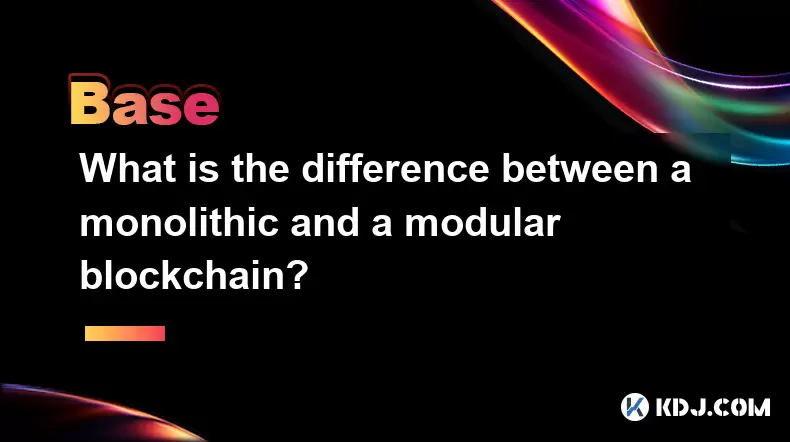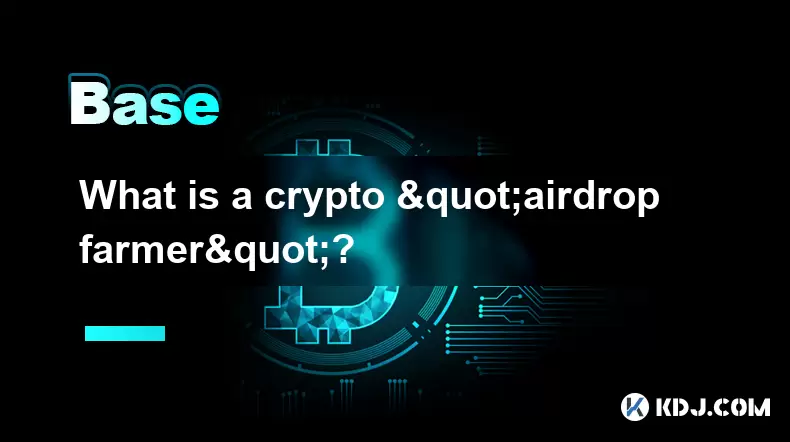-
 Bitcoin
Bitcoin $117900
0.31% -
 Ethereum
Ethereum $3766
0.28% -
 XRP
XRP $3.176
-0.31% -
 Tether USDt
Tether USDt $1.000
0.00% -
 BNB
BNB $795.6
1.51% -
 Solana
Solana $186.8
-1.09% -
 USDC
USDC $0.9999
-0.01% -
 Dogecoin
Dogecoin $0.2353
-1.33% -
 TRON
TRON $0.3226
1.49% -
 Cardano
Cardano $0.8172
-1.08% -
 Sui
Sui $4.178
3.06% -
 Hyperliquid
Hyperliquid $43.05
-3.39% -
 Stellar
Stellar $0.4367
-0.57% -
 Chainlink
Chainlink $18.62
1.47% -
 Hedera
Hedera $0.2828
6.63% -
 Bitcoin Cash
Bitcoin Cash $584.7
5.65% -
 Avalanche
Avalanche $24.81
2.53% -
 Litecoin
Litecoin $112.8
-0.88% -
 UNUS SED LEO
UNUS SED LEO $8.975
-0.08% -
 Shiba Inu
Shiba Inu $0.00001395
-1.07% -
 Toncoin
Toncoin $3.285
-1.05% -
 Ethena USDe
Ethena USDe $1.001
0.01% -
 Polkadot
Polkadot $4.123
0.76% -
 Uniswap
Uniswap $10.49
-0.18% -
 Monero
Monero $326.5
0.14% -
 Dai
Dai $0.9999
-0.02% -
 Bitget Token
Bitget Token $4.576
0.34% -
 Pepe
Pepe $0.00001247
-1.55% -
 Cronos
Cronos $0.1400
3.77% -
 Aave
Aave $295.1
-0.73%
What is the difference between a monolithic and a modular blockchain?
Ethereum is evolving into a modular blockchain through upgrades like rollups and sharding to improve scalability while maintaining security and decentralization.
Jul 27, 2025 at 03:49 am

Understanding the Concept of Blockchain Architecture
In the cryptocurrency space, blockchain architecture is a foundational concept that determines how a blockchain network operates. Monolithic blockchains and modular blockchains represent two distinct architectural approaches. Understanding the difference between them is crucial for developers, validators, and users who are looking to build or interact with blockchain systems.
At its core, a blockchain is a decentralized ledger that records transactions across a distributed network of computers. However, the way in which these transactions are processed, validated, and stored can vary significantly depending on the design of the system.
What Defines a Monolithic Blockchain?
A monolithic blockchain is one where all the core functions of the blockchain—such as consensus, execution, data availability, and networking—are tightly integrated within a single layer. This means that every node in the network processes every transaction and maintains a full copy of the blockchain.
In this model, all tasks are handled by the same system, which simplifies coordination but can lead to scalability challenges. Bitcoin and early versions of Ethereum are examples of monolithic blockchains. These systems are known for their high degree of security and decentralization, but they often struggle with throughput and latency issues.
How Does a Modular Blockchain Differ?
A modular blockchain, by contrast, separates the core functions of a blockchain into distinct modules or layers. Each layer is responsible for a specific function—such as consensus, execution, or data availability—and can be optimized independently.
This architectural choice allows for greater flexibility and scalability because different components can be upgraded or replaced without affecting the entire system. For example, a modular blockchain might use a high-throughput consensus layer while offloading execution to a separate layer like a rollup. This separation enables specialization and improved performance without compromising on decentralization or security.
Technical Implications of Both Architectures
The distinction between monolithic and modular blockchains has several technical implications:
- Scalability: Modular blockchains often offer better scalability since they can scale individual components independently.
- Security: Monolithic blockchains tend to have uniform security across all layers, while modular systems must ensure that each module maintains robust security.
- Upgradeability: Modular designs allow for easier upgrades and maintenance, as changes can be isolated to specific modules.
- Decentralization Trade-offs: Monolithic systems may require more powerful hardware for nodes, potentially reducing decentralization, whereas modular systems can distribute workloads more efficiently.
These differences have led to a growing interest in modular blockchain frameworks such as Celestia, which decouple data availability from execution and consensus layers.
Use Cases and Practical Examples
In practice, the choice between monolithic and modular designs often depends on the intended use case:
- Monolithic blockchains are well-suited for applications that prioritize security and finality, such as digital gold or store-of-value assets.
- Modular blockchains are more appropriate for high-throughput applications, including decentralized finance (DeFi), gaming, and microtransactions.
Projects like Ethereum are transitioning toward a more modular design through upgrades like sharding and rollups. Similarly, Cosmos and Polkadot enable interoperability between specialized blockchains, embodying the modular philosophy.
Operational Differences in Node Requirements
The node requirements for monolithic and modular blockchains also differ significantly:
- In a monolithic blockchain, every full node must process every transaction and store the entire state. This can lead to high resource demands and limit the number of participants.
- In a modular blockchain, nodes can specialize. For example, some nodes may only handle consensus, while others focus on execution or data availability.
This division of labor allows for a more scalable and accessible network, as it reduces the barrier to entry for running a node. It also enables innovations like light clients and fraud proofs, which allow users to verify parts of the blockchain without downloading the entire dataset.
FAQs
Q: Can a blockchain be both monolithic and modular?
A: No, a blockchain cannot be both simultaneously in its core design. However, some systems may incorporate modular components into an otherwise monolithic structure during transitional phases.
Q: Does modular architecture compromise decentralization?
A: Not necessarily. If designed properly, modular blockchains can maintain decentralization by ensuring that no single entity controls multiple critical layers.
Q: Are modular blockchains more complex to develop?
A: Yes, modular architectures introduce additional complexity due to the need to coordinate multiple layers and ensure their interoperability.
Q: Is Ethereum becoming a modular blockchain?
A: Yes, Ethereum is evolving toward a modular design through its roadmap, which includes upgrades like rollups, sharding, and layer-2 solutions to separate execution and data availability.
Disclaimer:info@kdj.com
The information provided is not trading advice. kdj.com does not assume any responsibility for any investments made based on the information provided in this article. Cryptocurrencies are highly volatile and it is highly recommended that you invest with caution after thorough research!
If you believe that the content used on this website infringes your copyright, please contact us immediately (info@kdj.com) and we will delete it promptly.
- Cryptos to Watch in 2025: Punisher Coin, Chainlink, and the Altcoin Arena
- 2025-07-27 18:30:13
- Bitcoin, Altcoins, Rebound: Navigating the Crypto Comeback Trail
- 2025-07-27 18:30:13
- Ethereum, Bitcoin, and Altcoins: A Shift in Crypto Tides?
- 2025-07-27 19:10:13
- Windtree Therapeutics' Bold BNB Strategy: A $520 Million Crypto Play
- 2025-07-27 19:10:13
- Solana, Staking, and Unilabs: What's the Buzz in the Crypto Space?
- 2025-07-27 16:50:13
- VeChain, HBAR, Remittix: Navigating the Crypto Landscape in 2025
- 2025-07-27 17:10:12
Related knowledge

What is the difference between CeFi and DeFi?
Jul 22,2025 at 12:28am
Understanding CeFi and DeFiIn the world of cryptocurrency, CeFi (Centralized Finance) and DeFi (Decentralized Finance) represent two distinct financia...

How to qualify for potential crypto airdrops?
Jul 23,2025 at 06:49am
Understanding What Crypto Airdrops AreCrypto airdrops refer to the distribution of free tokens or coins to a large number of wallet addresses, often u...

What is a crypto "airdrop farmer"?
Jul 24,2025 at 10:22pm
Understanding the Role of a Crypto 'Airdrop Farmer'A crypto 'airdrop farmer' refers to an individual who actively participates in cryptocurrency airdr...

What is the difference between a sidechain and a Layer 2?
Jul 20,2025 at 11:35pm
Understanding the Concept of SidechainsA sidechain is a separate blockchain that runs parallel to the main blockchain, typically the mainnet of a cryp...

What is the Inter-Blockchain Communication Protocol (IBC)?
Jul 19,2025 at 10:43am
Understanding the Inter-Blockchain Communication Protocol (IBC)The Inter-Blockchain Communication Protocol (IBC) is a cross-chain communication protoc...

How does sharding improve scalability?
Jul 20,2025 at 01:21am
Understanding Sharding in BlockchainSharding is a database partitioning technique that is increasingly being adopted in blockchain technology to enhan...

What is the difference between CeFi and DeFi?
Jul 22,2025 at 12:28am
Understanding CeFi and DeFiIn the world of cryptocurrency, CeFi (Centralized Finance) and DeFi (Decentralized Finance) represent two distinct financia...

How to qualify for potential crypto airdrops?
Jul 23,2025 at 06:49am
Understanding What Crypto Airdrops AreCrypto airdrops refer to the distribution of free tokens or coins to a large number of wallet addresses, often u...

What is a crypto "airdrop farmer"?
Jul 24,2025 at 10:22pm
Understanding the Role of a Crypto 'Airdrop Farmer'A crypto 'airdrop farmer' refers to an individual who actively participates in cryptocurrency airdr...

What is the difference between a sidechain and a Layer 2?
Jul 20,2025 at 11:35pm
Understanding the Concept of SidechainsA sidechain is a separate blockchain that runs parallel to the main blockchain, typically the mainnet of a cryp...

What is the Inter-Blockchain Communication Protocol (IBC)?
Jul 19,2025 at 10:43am
Understanding the Inter-Blockchain Communication Protocol (IBC)The Inter-Blockchain Communication Protocol (IBC) is a cross-chain communication protoc...

How does sharding improve scalability?
Jul 20,2025 at 01:21am
Understanding Sharding in BlockchainSharding is a database partitioning technique that is increasingly being adopted in blockchain technology to enhan...
See all articles

























































































